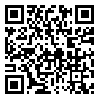Volume 11, Issue 2 (4-2007)
IBJ 2007, 11(2): 75-80 |
Back to browse issues page
Download citation:
BibTeX | RIS | EndNote | Medlars | ProCite | Reference Manager | RefWorks
Send citation to:



BibTeX | RIS | EndNote | Medlars | ProCite | Reference Manager | RefWorks
Send citation to:
Sabetkasaei M, Masoudnia F, Khansefid N, Behzadi G. Opioid Receptors of the Central Amygdala and Morphine-Induced Antinociception. IBJ 2007; 11 (2) :75-80
URL: http://ibj.pasteur.ac.ir/article-1-131-en.html
URL: http://ibj.pasteur.ac.ir/article-1-131-en.html
Abstract:
The amygdala is a forebrain region, which is known as a modulator of pain sensation. The amygdala, particularly the central nucleus, has high concentrations of enkephalins relative to dynorphins and has high concentrations of opioid receptors. We here studied the role of central nuclei of amygdala in morphine antinociception. Methods: In this study, we used 130 male Wistar rats (200- 250g). Bilateral two guide cannula were inserted into central nuclei of amygdala. The drugs were administrated via intra central- amygdala and intraperitoneal. The antinociceptive effect was measured by formalin test. Results: Bilateral microinjections of morphine (50 and 100 μg/rat) into the central nuclei of amygdala elicited powerful suppression of nociceptive behaviors in both phases of formalin test. The intraperitoneal administration of naloxone (1 and 2 mg/kg) decreased significantly the antinociception induced by the intra-amygdaloid injection of morphine. Our data also showed that microinjection of naloxone (50 and 100 μg/rat) into the central nuclei of amygdala could reduce the analgesic effects of systemic morphine (7 mg/kg). On the other hand, bilateral neurotoxic lesions of the central nuclei of amygdala attenuated the antinociception induced by subcutaneous or intra-amygdaloid injection of morphine. Conclusion: These findings suggest that morphine analgesia in the formalin test depends on ascending connections to the forebrain, probably the amygdala.
Type of Study: Full Length/Original Article |
Subject:
Related Fields
Send email to the article author
| Rights and permissions | |
 |
This work is licensed under a Creative Commons Attribution-NonCommercial 4.0 International License. |









.png)
